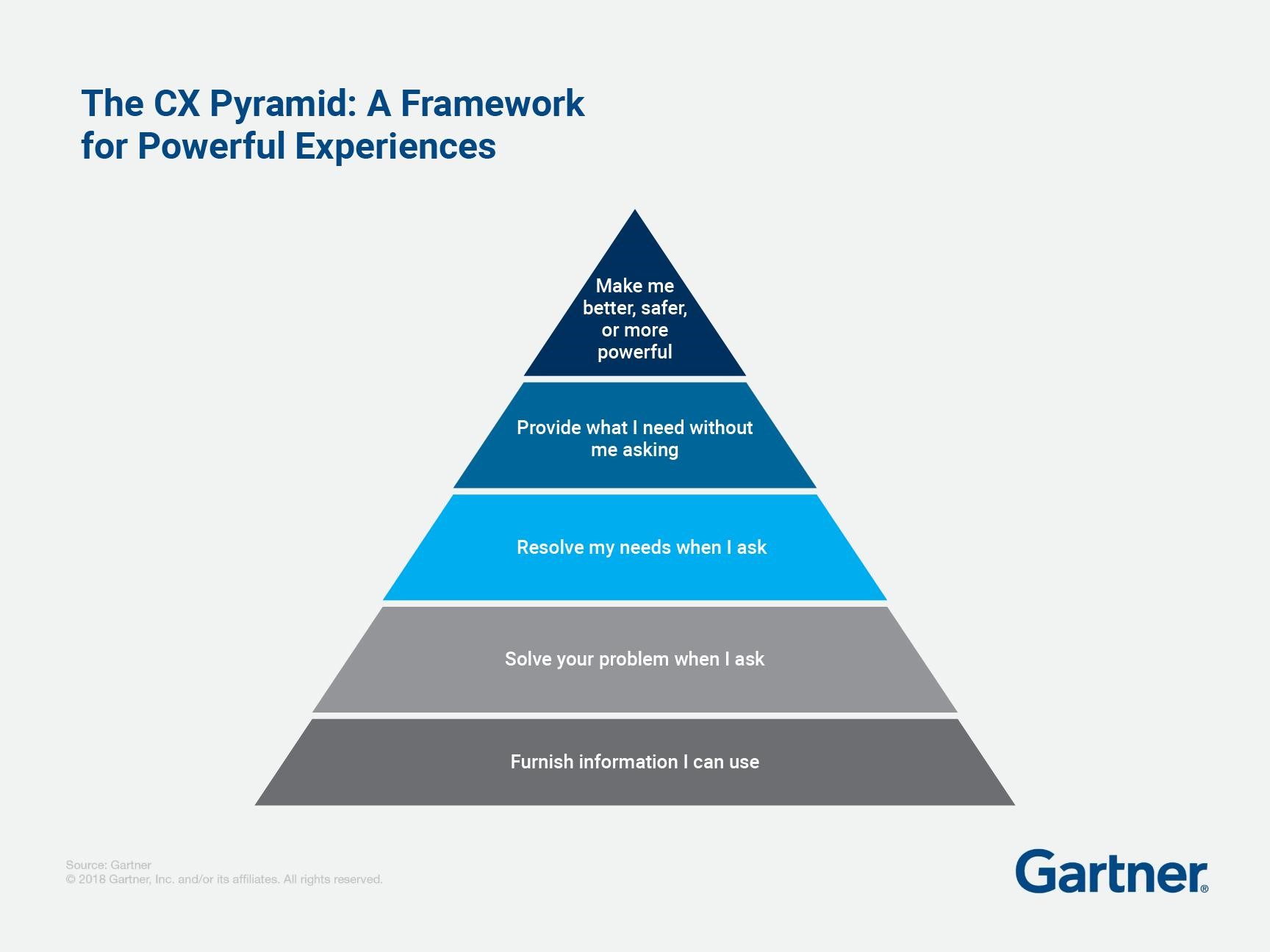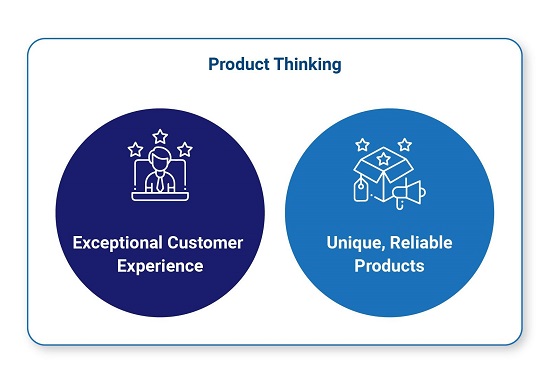Product Thinking: How to Build Better Products in an Enterprise Setting
Our latest blog explores the fine art of product thinking.
We all think of products in terms of features and functionalities since in their essential form, they are pieces of software programmed to perform functions and tasks. But what if you thought of these products as solutions to the problems you face in your day-to-day life?
This is the essence of Product Thinking.
Product Thinking puts innovation on a pedestal and advocates developing unprecedented product ideas by practicing a ‘Design Thinking Culture.’ This way, there is no room for additional features that do not involve problem-solving.
Determining the type of innovation
New Product Development ideas lie in the “Select” phase. This is where the rubber hits the road, and you are required to select which type of innovation your product requires to deliver. The selected innovation type must fall under one of the following three categories:
- Incremental innovation: Enhancing existing offerings already available in an existing market.
- Evolutionary innovation: Taking a new solution to an existing market or taking an existing solution to a new market.
- Revolutionary innovation: Delivering an entirely new proposition to an entirely new market.
How customer experience gives more buying options
The “select” phase helps to put a system in place that can guide you toward selecting the type of innovation your product vision should have. Additionally, it ensures that your product will solve a significant customer pain point and deliver an exceptional customer experience.
This is where the concept of Product Thinking becomes an invaluable ally in any enterprise setting.
A few Product Thinking benefits include:
- Bridging the gap between business and Design Thinking by putting the product at the very core of everything that you do. It de-emphasizes existing market dynamics and ensures that you deliver a necessary product to your target customers.
- Emphasizing the necessity of new product development, both unique and offering an excellent customer experience. This way, you can ensure that your product will be ahead of the pack and have a long-standing value proposition.
Gartner’s CX Pyramid: A Framework for powerful experiences
In 2018, Gartner introduced a revolutionary framework for executives to understand what separates a powerful customer experience from the laggards. The pyramid puts forth an incrementally better way for brands to forge long-lasting relationships with their customers from bottom to top.
This pyramid helps to identify the ideal customer experience strategy based on the following criteria:
- The triggers that shape the customer experience
- The efforts exerted by the customers
- The reliability of the solution
- The change in perception and emotions that the experience triggers
The following five stages together make up the pyramid:

- Communication stage:Delivering the right information to customers at relevant channels and optimal times.
2. Responsive stage: Quickly and efficiently solving customer issues by defining customer goals, measures, and strategies.
3. Commitment stage:Listening to customer needs and resolving them.
4. Proactive stage: Creating and delivering experiences that meet customer needs before they ask for them.
5. Evolution Stage: Making customers feel better, safer, and more powerful.
Why you should avoid over-reliance on data
The CX Pyramid is an excellent framework for executives to understand their approach toward business and design a powerful customer experience. However, they must not rely too much on data-driven decisions, leading to the problem of being too customer-centric.
When companies prioritize customer wants over needs, it can lead to the complete customer experience being misaligned with what the users truly require. This can lead to a false perception of a great customer experience that is only skin deep. This also applies to what you build within the product during the new product development.
There are two ways to ensure that your solution is solving an existing customer pain point:
- The Innovation-Decision Funnel suggests iterating through various concepts until you finally arrive at one that resonates with your target audience and the decision-makers. This framework follows a linear progression where you can evaluate multiple factors before settling on an option that’s efficient, cost-effective, and guarantees better CX outcomes.
- The Solution Canvas suggests that design teams move away from designing for what they believe customers want. Instead, they must ideate value propositions based on data collected from customer interactions. This allows the business to make decisions based on understanding the problem rather than what you think the solution is.

The product should always be at the heart of everything you do in any enterprise setting. During every stage in the CX Pyramid, your plan must deliver an efficient product that allows customers to focus on their goals.
How to build a product-oriented organization
- Taking ownership
As any leader, your role is facilitating an environment where everyone can contribute to the company’s success. A great way to do this is by assigning ownership to every team member and allowing them to take charge of their product throughout its lifecycle and with new product development. This includes proactively researching new solutions or changing courses for projects that previously were not functioning. - Scaling iterations
You may often fall into the trap of trying to perfect one solution before moving on. While this may sound prudent, it can lead you to miss out on long-term opportunities. Product teams must combat this by iterating quickly to experiment with various solutions and then moving fast at validating them. - Giving control to customers
Being too controlling of your product will lead to a disconnect with your customer base. Not only will they feel alienated, but it can also lead to misalignment between what you’re creating and their actual needs. To avoid this, you have to remember that your goal is to create something efficient for the user, not just an efficient product for you. - Ongoing Product Learning
A product manager is the central point of contact for development teams, designers, and marketers throughout their lifecycle and during new product development. However, they must accept feedback from every project stakeholder for constant upskilling and optimization. This includes customers, development teams, designers, marketers, sales reps, and executives. - Transparency during every stage of the product lifecycle
As product managers are accountable for their products throughout their lifecycles, they need to be transparent during every stage of that process. This means being upfront about any challenges they have faced or competing products they know. - Not being afraid to play the long game
This trait can be adopted by any leader working in an enterprise setting, not just product managers. Building a great product isn’t always about doing what’s best for customers today. It must also be about what will provide value to them ten years from now.
Conclusion
To build better products in an enterprise setting, organizations must understand the importance of Product Thinking. This involves taking ownership of your product and scaling iterations quickly while giving control to customers. It also requires ongoing product learning and transparency during every product lifecycle stage. By following these principles, new-age organizations can create efficient products that deliver exceptional customer experiences for years to come.
Latest Blogs
A closer look at Kimi K2 Thinking, an open agentic model that pushes autonomy, security, and…
We live in an era where data drives every strategic shift, fuels every decision, and informs…
The Evolution of Third-Party Risk: When Trust Meets Technology Not long ago, third-party risk…
Today, media and entertainment are changing quickly. The combination of artificial intelligence,…




